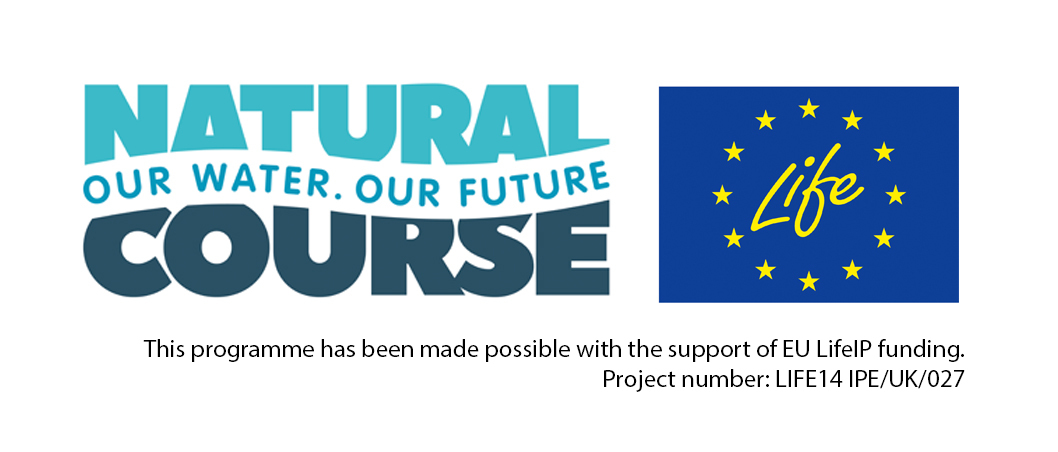
5 Easy Ways to Revive Your River: You can’t ignore invasives
Last week, we shared how simple changes in plastic use can help to revive rivers. Now, we turn our attention to another big threat to the health of rivers and their wildlife: invasive non-native species (INNS). They sound scary and, for certain native species, they are.
11/08/21
Invasive species are varieties of plants and animals which are introduced to a habit they are not native to, and then go on to wreak havoc on the native ecosystem. On one level, bringing species into a new location sounds quite exciting. We don’t mean to demonise any particular species, especially if it doesn’t threaten existing wildlife. Unfortunately, though, we don’t always know in advance what effect a new species will have on an ecosystem, and in some cases we only find out once it has caused serious decline, or even extinction, of others.
Complications of introducing invasive species
- Predation – a double-edged sword, as invasive species can proliferate without their natural predators around, and can also predate existing species, wiping them out before they are able to adapt.
- Competition for resources – being a native plant or animal trying to come to terms with a new invasive species in town is a bit like attending the Boxing Day sales – you’ve got to beat everyone else to get what you need. Food, shelter, and territory are all in demand in the survival of the fittest.
- New diseases – non-native species which are introduced to a different ecosystem might be carrying pathogens which may not be dangerous in their native environment, but can cause havoc in populations without any resistance or immunity.
- Hybridisation – if one species breeds with another related species, the genetic diversity of the original species could be lost.
Invasive freshwater species and how to tackle them
Sadly, freshwater habitats are particularly vulnerable because invasive species are dispersed along watercourses very easily. In fact, invasive species have contributed, among other factors, to an 83% global decline in freshwater species since 1970.
Some of the invasive species to look out for by rivers are:
- Floating pennywort – First used as an ornamental plant in garden ponds, Floating Pennywort forms dense mats on the surface of the water, which blocks the sunlight for other aquatic plants and causes drop in oxygen levels that can be fatal for fish. Cutting the plant regularly helps reduce its dominance and allow other species to thrive, and chemical treatment can be used late in the growing season once other species have died off.
- Himalayan Balsam – Himalayan Balsam grows in dense thickets and projects its seeds up to 4m away, making it very difficult for other plants to survive alongside it. The thickets can impede water flow, thus increasing flood risk, and leave riverbanks vulnerable to erosion as dieback occurs during the winter. Furthermore, the pink flowers are very attractive to insects, which can negatively impact the pollination of native plants. The good news is that Himalayan balsam has shallow roots, so they can be easily dug up. Having said this, you need to be very careful to make sure you don't further spread the plant. This video has some great tips.
- Signal crayfish – These North American crayfish make their burrows in riverbanks, which leaves them unstable and vulnerable to collapsing, as well as disturbing other wildlife. Signal crayfish are bigger and grow faster than the UK’s native crayfish, so they have become more dominant. Another danger is crayfish plague, which has ravaged native crayfish populations. If you trap a signal crayfish, it must be humanely destroyed.
- Japanese Knotweed – Japanese Knotweed grows prolifically in almost any environment; it can even penetrate walls. It’s very hard to properly remove, because disturbing it can cause its fragments to spread further, and it can quickly become dominant in the ecosystems it inhabits. The best thing to do is the cut or spray the plant early in summer and then in winter, but it can take several years to achieve total dieback.
- American Mink – American mink were imported to the UK for their fur, and were able to escape into the wild, eating all the small mammals, birds, and eggs they could find along the way. Some of the mink’s favourite species include endangered water voles and various seabirds. In areas where conservation in prioritised, mink-proof fences can be used to prevent mink from gaining access to nesting sites and dens.
Once a new species establishes itself, it’s very difficult to eradicate, so prevention and early intervention are key. If you’re spending time in, on, or near a river (which we very much hope you are), there are a few simple things you can do to prevent the spread of invasives. The most important thing is to follow the check, clean, and dry principle:
Check, clean and dry
- Check your clothes and equipment for live organisms or seeds
- Clean your clothes and equipment well, leaving any organisms where you found them
- Dry your belongings so you don’t transfer water (with organisms in it) elsewhere
The other way you can help is to get involved! Many of our 60+ local member Trusts host volunteering activities to remove invasive species. In fact, our Trusts have contributed to some of the UK’s leading conservation projects against invasive species, such as the Tweed Invasives Project. Head to our Events page or find your local Trust to see if you can join in with some balsam bashing!


